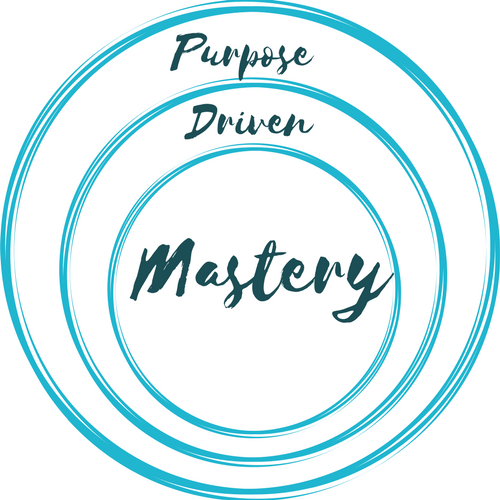––– “Great things are done in a series of small things brought together.”
“Great things are done in a series of small things brought together.”
―Vincent Van Gogh
Micronutrients
Vitamins and minerals are micronutrients found in food that are essential for your optimal health and wellness.
The wide range of vitamins and minerals are the building blocks for your body’s physiological processes.
Foods Containing Vitamins
The best option to obtain vitamins and minerals is by eating nutrient-dense foods.
Here are some key vitamins with their functions and food source.[1]
Vitamin |
Function |
Food Source |
|
Vitamin A (Retinol) |
|
|
|
Vitamin B1 (Thiamine) |
|
|
|
Vitamin B2 (Riboflavin) |
|
|
|
Vitamin B6 (Pyridoxine) |
|
|
|
Vitamin B12 (Cobalamin) |
|
|
|
Vitamin C (Ascorbic Acid) |
|
|
|
Vitamin D |
|
|
|
Vitamin E (Tocopherol) |
|
|
|
Vitamin H (Biotin) |
|
|
|
Vitamin K |
|
|
|
Folic Acid |
|
|
Ensure you have plenty of vitamin D from sun exposure, food, or supplement.
Low levels of vitamin D can cause:
- Heart disease
- Type 1 diabetes
- Stroke
- Flu
- Cancer
- Multiple sclerosis
Fifteen to thirty minutes of daily sun exposure with 25% skin exposure is plenty for healthy vitamin D production.
 This is also a great reason for you to go outside during the day and enjoy some fresh air!
This is also a great reason for you to go outside during the day and enjoy some fresh air!
Minerals
Here’s a list of key minerals with functions and food sources.
Mineral |
Function |
Food Source |
|
Calcium |
|
|
|
Iron |
|
|
|
Magnesium |
|
|
|
Zinc |
|
|
From the food sources listed in the tables above, the simple solution is to just eat nutrient-dense foods such as dark leafy vegetables that contain both vitamins and minerals.
What You Didn’t Know About Sodium
Your body only needs a small amount of sodium to work properly.
But because salt (90% sodium) is in almost everything that we eat, it’s extremely easy to over-consume the daily recommended dosage of fewer than 2300 milligrams (equal to one teaspoon of salt) per day.[2]
 Less than 1500 milligrams per day if you’re older than 50 or have a cardiovascular risk factor.
Less than 1500 milligrams per day if you’re older than 50 or have a cardiovascular risk factor.
Based on the Center for Disease Control, the average daily consumption of sodium for Americans older than two years is 3400 milligrams.[3]
The top ten food sources[4] of sodium in children and adolescents are:
- Pizza
-
Mexican mixed dishes
-
Sandwiches
-
Bread and rolls
-
Cold cuts and cured meats
-
Soups
-
Savory snacks
-
Cheese
-
Plain Milk
-
Poultry
As you can see, processed food makes up most of the list!
The easiest way to reduce sodium consumption is to remove processed food!
The benefits of reducing sodium intake include the lowering of:
- Blood pressure
- Risk of heart disease
- Risk of stroke
- Water retention
- Risk of gastroesophageal cancer
- Left ventricular mass
In addition, lowering sodium intake helps preserve bone mass.
The first leading cause of death in the U.S. is heart disease and the third leading cause of death is stroke.[5]
The Importance of Potassium
The adequate potassium amount of 4700 milligrams per day is enough for you.
Keeping a 1:2 ratio of sodium to potassium is important according to the Institute of Medicine.
Perspiration releases electrolytes like sodium and potassium.
Therefore having enough electrolyte replenishment is crucial, especially if you’re physically active.
Cramps occur when your body is low on electrolytes.
I consume most of my electrolytes from vegetables and fruits.
 Bananas make a great pre-workout snack because they’re easy to digest and contain an abundant amount of potassium!
Bananas make a great pre-workout snack because they’re easy to digest and contain an abundant amount of potassium!
Micronutrient Supplements
Try your best to get your mineral and vitamins from nutrient-dense foods and only use supplements to fill in any key missing components.
It’s not essential to meet all the recommended dosages for each mineral and vitamin.
Do your best and listen to your body.
Supplement on days when you have an intense workout or have not been eating healthy.
The multivitamin that I use is from Legion.
Closing Thoughts
Vitamins and minerals are important for overall health and wellness.
Because of modern technological advancements, you can consume all the key nutrients all year round.
But before that was available, your ancestors were still able to live and thrive.
Focus on getting your vitamins and minerals from nutrient-dense foods and your health will thrive!
Being consistent is the key!
Don’t be too concerned about missing some vitamins and minerals every so often.
Get annual laboratory tests for minerals and vitamins and take necessary steps to prevent any deficiencies.
I am on a mission to help 1,000,000 people, and I can’t do that without your help. Please share this article with anyone who you may think will find it valuable and helpful. Thank you very much! I greatly appreciate it!
Do you want to live purposefully and become the most powerful version of yourself? If so, start with your free gift down below.
Get Your Free Gift!
Footnote References:
[1]“New Health Guide.” List of Vitamins and Minerals, accessed Dec. 17th 2016, http://www.newhealthguide.org/List-Of-Vitamins-And-Minerals.html.
[2]Institute of Medicine. Dietary reference intakes for water, potassium, sodium chloride, and sulfate. Washington, DC: National Academies Press; 2004.
[3]Centers for Disease Control, Sodium: The Facts, accessed Dec. 16th, 2016, https://www.cdc.gov/salt/pdfs/sodium_fact_sheet.pdf.
[4]Centers for Disease Control, Sodium: The Facts, accessed Dec. 17th, 2016, https://www.cdc.gov/salt/pdfs/children_sodium.pdf.
[5]Heron MP, Hoyert DL, Murphy SL, Xu JQ, Kochanek KD, Tejada-Vera B. Deaths: Final data for 2006. National vital statistics reports; Vol 57 No 14. Hyattsville, MD: National Center for Health Statistics; 2009.










